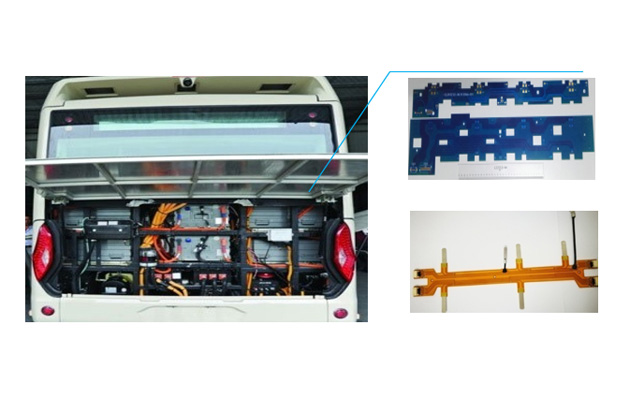
In order to improve the quality and cost, improve the level of automation, lightweight, etc., power battery enterprises are also actively importing FPC PCB to replace the traditional wiring harness.
Acquisition line is an important part required by BMS system of new energy vehicles. It can monitor the voltage and temperature connection data collection and transmission of new energy power battery cell and has overcurrent protection function to protect the car power battery cell, and automatically disconnect from abnormal short circuit.
The conventional wiring harness is made of copper wire surrounded by plastic. When connecting the battery Pack, each wiring harness reaches an electrode. When there are many current signals in the power battery Pack, many wiring harnesses are needed to match, which will occupy a large space. Traditional wiring harnesses rely on workers to manually fix ports on battery packs, which has a low degree of automation.
Than copper wire harness, FPC due to its highly integrated, thin thickness, softness etc, in such aspects as safety, lightweight, neat layout have prominent advantages, in addition the FPC thickness thin, custom battery pack structure, the assembly can be placed directly by mechanical arm grab on the battery pack, a high degree of automation, suitable for large-scale mass production, The trend of FPC replacing copper wire harness is clear. Especially in terms of automation and lightweight, this greatly improves the production efficiency for power battery enterprises with an annual production scale of 2-8GWh, saves the unit production cost, and further improves the grouping efficiency of power battery system.
Energy storage battery field added new power, is expected to thicken by 33% in 2030 space dual carbon target, energy storage industry is expected to develop greatly. The monitoring and information transmission of energy storage batteries is the key to safety. The application of FPC PCB has been extended to the field of energy storage, and some companies in the industry have provided relevant solutions. Both the demand end and the production end are concentrated in China, which is conducive to the development of the domestic industrial chain. Domestic battery manufacturers such as Ningde Times and BYD account for more than 40% of the global advantage and are more active in capacity expansion.

